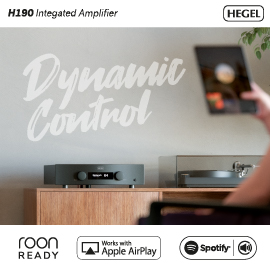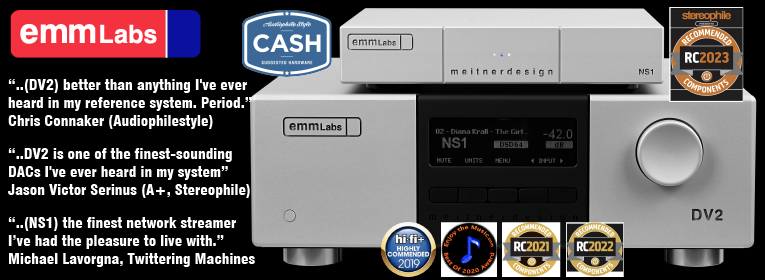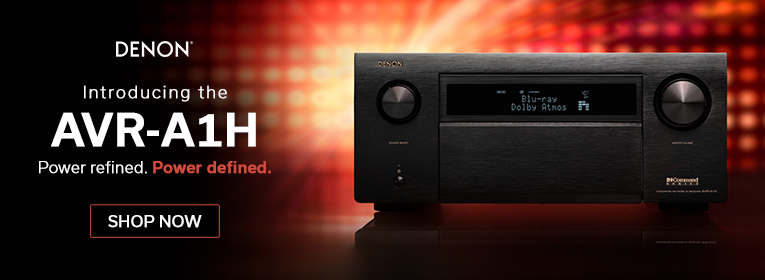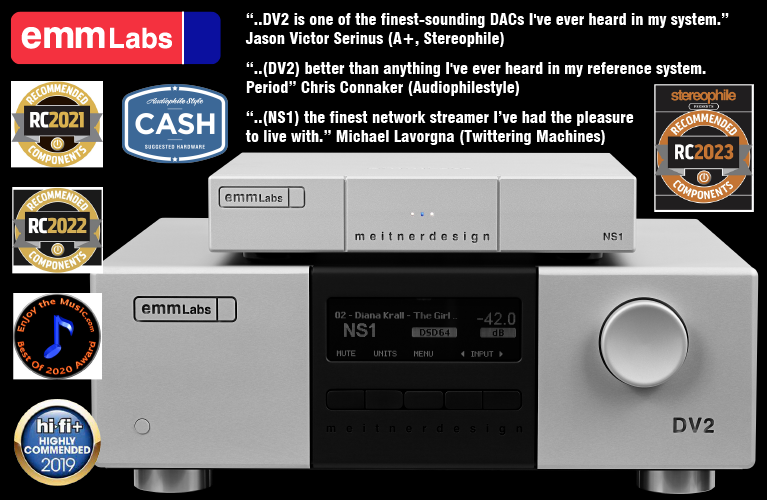Note: Measurements can be found through this link.
 Tell an audiophile that you have a 150Wpc solid-state stereo amplifier and you’ll likely be met with a shrug and a “So what?” There have been too many such amps over the years to count, or to care that much about any. But tell that audiophile that your amp was made by Luxman, a revered Japanese brand whose history dates back to 1925; that it features some of the best metalwork you’ll find anywhere at any price; that it weighs over 100 pounds and can deliver, in stereo, 300Wpc into 4 ohms continuously, or 1200Wpc into 1 ohm for peaks; and that it can be used as a mono amp, in which configuration it puts out 600W into 8 ohms (continuous) or 2400W into 2 ohms (peaks), and you might hear, “Now that sounds interesting.”
Tell an audiophile that you have a 150Wpc solid-state stereo amplifier and you’ll likely be met with a shrug and a “So what?” There have been too many such amps over the years to count, or to care that much about any. But tell that audiophile that your amp was made by Luxman, a revered Japanese brand whose history dates back to 1925; that it features some of the best metalwork you’ll find anywhere at any price; that it weighs over 100 pounds and can deliver, in stereo, 300Wpc into 4 ohms continuously, or 1200Wpc into 1 ohm for peaks; and that it can be used as a mono amp, in which configuration it puts out 600W into 8 ohms (continuous) or 2400W into 2 ohms (peaks), and you might hear, “Now that sounds interesting.”
Indeed. But when it comes to this amp, “interesting” might be as much of an understatement as saying that Kind of Blue or Exile on Main Street are good albums.

Description
Luxman’s M-900u ($19,900 USD) is the companion model to the identically priced, similarly styled C-900u preamplifier, which I reviewed in November. Not surprisingly, the two models feature the same build quality: top shelf, even in comparison to products two or three times the price. For instance, the M-900u’s front panel is about 1/2” thick, and the sides, top, and rear are about 1/4” thick; this makes it as sturdy as anything out there, and contributes to its weight of 106 pounds. It’s dense as hell. The metalwork has perfect joins, and is impeccably finished in gorgeous shades of gray. The M-900u is big for its power rating of 150Wpc: about 17.2”W x 8.7”H x 18.9”D. Like the C-900u, it has cast-iron footers with cushiony undersides.

At the center and right of the upper half of the M-900u’s front panel are two power meters, to indicate how hard the M-900u is working and to add a bit of retro styling and pizzazz, 1970s style. The beveled glass covering the meters, of the same look and quality as the one on the C-900u, is an elegant touch. Toward the bottom left of the front panel are the Operation/Stand By button, used for day-to-day turn-on; a Stand By indicator; Line and Balanced Line indicators, which, in conjunction with the next button, Input, show whether the single-ended or balanced inputs are active; and the Display button, to adjust the brightness of the meter lamps, or turn them and the meters completely off. At the center is the BTL indicator, which lights up only if the M-900u is put into mono mode using the switch on the rear panel. (Because I was sent only one M-900u, I’ve reviewed it as a stereo amp.)

Around back are some of the biggest binding-post knobs I’ve ever seen on an amp, and some of the most useful -- they can be tightened or loosened with an entire hand, not just two fingers. Stacked at the center of the rear panel are pairs of balanced and single-ended inputs, a ground connector, and an IEC-compatible AC inlet. To the left of the last is a pushbutton for turning on the main power -- this is meant to be left on pretty much all the time, to keep the circuits at operating temperature. At the top left are the Remote In connector (to permit remote turn-on from the preamp) and the BTL and Balanced Line Phase switches. Flipping the BTL switch turns the M-900u into a mono amp, while the Balanced Line Phase reverses the polarity of the balanced inputs, in case the preamp’s polarity is the inverse of the M-900u’s. Luxman supplies custom-made, high-quality power cords with the M-900u and C-900u -- usually, the stock cords of even high-priced high-end gear are generic items. A nice touch.

Getting inside the M-900u isn’t as easy as it is with most other amps. There are no bolts on the top panel, so I carefully examined the entire case to find the quickest way in. When I couldn’t figure it out, I phoned Philip O’Hanlon, owner of On a Higher Note, Luxman’s North American distributor, and asked him how to proceed. His reply: “The people at Luxman think, Why use four bolts when you can use 20?” He laughed, and explained how I could get in if I really wanted to. In the end, I didn’t try -- I didn’t want to risk damaging the amp, and figured it wasn’t that important. Instead, I went online to find out what I could about the M-900u’s guts.
I learned that the M-900u uses v.4.0 of Luxman’s Only Distortion Negative Feedback (ODNF) circuitry, which they say reduces high-frequency distortion. Luxman says that the amp’s circuit boards are creamy white because they don’t use a green solder mask, which the engineers feel mucks up the sound. Bus bars of thick, pure copper connect the power supply to the rest of the circuitry, for best power transfer. The few photos of the M-900u’s interior that I found revealed an internal quality of build that matched that of the exterior. As O’Hanlon said, “Luxman’s the kind of company that doesn’t only finish well the parts you see.” Seems so -- even if you’ll never see it unless you’re willing to figure out Luxman’s 20-bolt system.

The M-900u’s power ratings might at first seem to indicate only a modest power output, but it’s actually a lot of juice into 1 ohm. Other than those, Luxman’s specs aren’t exhaustive, and give little hint of the amp’s sound quality -- they don’t differ much from the specs of a typical solid-state amp: frequency responses of 20Hz-20kHz, +0/-0.1dB, and 1Hz-130kHz, +0/-3.0dB; harmonic distortion of less than 0.0008% at 1kHz, and 0.1% from 20Hz to 20kHz for the same load; a damping factor of 710; and a signal/noise ratio of 117dB. No frequency range is specified for the last two specs, but, as always, what really matters is the . . .
Sound
Right from the start, I was taken aback by the spaciousness of the soundfields re-created by the Luxman M-900u. They were impressive enough with Simaudio’s Moon Evolution 740P preamplifier, but nothing short of a revelation with Luxman’s own C-900u, which is also very good at the accurate reproduction of soundstages. The M-900u’s soundstages were huge when the recording engineers had captured such a space, but even when they hadn’t -- as with many pop recordings -- it was easy to hear everything that was captured. As I mentioned in my review of the C-900u, the sound quality of Sade’s Soldier of Love (16-bit/44.1kHz FLAC, Epic) is hardly of audiophile caliber -- the “soundstage” of this multimiked studio creation was assembled on a mixing board -- but I’d never heard anywhere near as much apparent depth in “Long Hard Road” as when I played it through the M-900u. The space behind singer Sade Adu, only hinted at by other amps, was readily audible through the M-900u.
In Leonard Cohen’s most recent studio album, Popular Problems (24/96 WAV, Columbia), his voice is closely miked with a lot of reverb added. Through the M-900u the sound was full, present, and bulbous, and enveloped the speaker end of my listening room -- a “wall of sound” in which voices and instruments were delineated in space with laser-sight specificity. In contrast, when I slid the Hegel Music Systems H30 power amplifier ($15,000) into the same system, I heard similar presence from the Cohen album, but not nearly as much space. Ditto for the “depth” behind Sade. But that’s not to slight the H30 -- no power amp has sounded as spacious in my room as did the M-900u -- even the Simaudio Moon Evolution 870A ($22,000), which is good in that regard.

Regarding the M-900u’s precision of imaging within its spacious soundstages: In “Roxanne,” from Musica Nuda’s self-titled debut album (16/44.1 FLAC, BHM), the voice of Petra Magoni and the double bass of Ferruccio Spinetti were presented on a stage of considerable size, yet their positions on that stage had super-sharp focus -- from left to right and from front to back, there was no question of precisely where the sound of each was coming from. Sade Adu’s and Leonard Cohen’s voices hung tangibly at the center of their stages with amazing focus, fullness, and presence, but were also utterly distinct from the space and the musicians around them -- almost carved out in space. On my longtime test disc for soundstaging and imaging, Ennio Morricone’s score for the film The Mission (16/44.1 FLAC, Virgin), the chorus occupied a cavernous space larger than I’d ever heard before, but was also more sharply defined than I’d ever heard -- placements of individual voices in three-dimensional space were pinpoint accurate.
Soundstaging and imaging weren’t the M-900u’s only strengths. The Luxman’s tonal balance was magic to my ears, and a perfect match for the speakers I primarily used it with: Sonus Faber’s Olympica III and Revel’s Performa3 F206. From top to bottom, the M-900u was as neutral as you’d expect a topflight solid-state amp to sound, and without the clinical or sterile quality that plagues some solid-state gear. The bass was full and rich in a way that added heft, but was also tight, deep, and forceful; the midrange was wickedly detailed and transparent, with a smooth, silky quality akin to that of a great tube design, yet with none of the colorations normally associated with tubes; and the highs were airy beyond belief.
As a result of all this, Sade’s voice was strikingly pure and clean through the Revel F206es, whose exceptionally clear, neutral reproduction of the midrange the M-900u only helped to confirm. And despite these speakers selling for only $3500/pair, their sound as driven by the M-900u was akin to the midrange performance of reference-class speakers costing many times more. The Olympica III’s midrange isn’t quite as neutral as the F206’s -- it’s a touch laid-back in the upper mids -- but through the Sonus Fabers, Sade’s voice was every bit as smooth as through the Revels, and with just a bit more body. That extra bit of body was probably due to the Olympica III’s subtle voicing, and if so, was probably deliberate -- the Sonus Faber sound has never been about unflinching neutrality. But with neither speaker did smoothness come at the expense of detail, resulting in a syrupy smoothness that’s enticing to listen to but lacks resolution -- something that can often happen with tubed amps. Instead, the M-900u unveiled as much information throughout the audioband as I’ve heard any amp do, including Simaudio’s Moon Evolution 870A, for which this is also a strong suit.
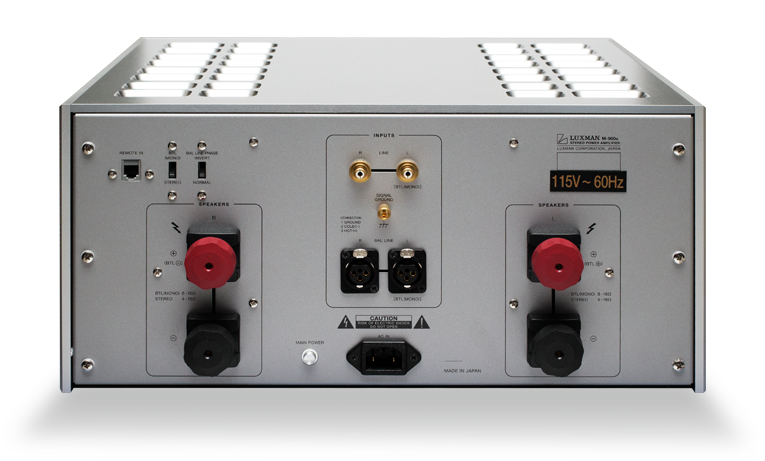
The M-900u’s pure, effortless top end reproduced cymbals with such clarity that it set a new benchmark for me for high-frequency reproduction and detail. At the other end of the audioband, it reproduced kick drums with the power, heft, and control usually heard only from amps with twice the power output. This only confirmed for me that, despite its modest output spec into 8 ohms, the M-900u is actually a powerhouse. The ultra-low-frequency rumblings that occur throughout “Mining for Gold,” from the Cowboy Junkies’ The Trinity Session (16/44.1 FLAC, RCA), were as deep and detailed as I’ve heard. In short, in terms of bass power and extension, I heard nothing missing from the M-900u’s sound, even in comparison with the Hegel H30 and the Simaudio 870A, whose respective continuous-power outputs into 8 ohms are 350 and 300Wpc. I suspect that the Luxman’s current capabilities, and perhaps its peak power delivery, are in the same vicinity as those of these apparently more powerful amps. But that’s just a guess.
Those who play their music LOUD, and/or who have speakers far less efficient than the Revels or Sonus Fabers, might at some point need the extra power provided by the H30, the 870A -- or by two M-900u’s in mono mode. But I never reached the M-900u’s limits, even in my very large room. For example, I like to play “Go Your Own Way,” from the hi-rez version of Fleetwood Mac’s Rumours (24/96 FLAC, Warner Bros.), at nothing short of headbanger levels, which the Revel F206es don’t like (their one limitation is that they can’t play ultraloud) but the Sonus Faber Olympica IIIs are surprisingly capable of -- with their fancy woodwork and leather, these speakers look delicate enough to break easily, but can actually take abuse. When I played this track at levels that almost made my ears ring, the M-900u didn’t sound close to clipping, nor did it hint at experiencing any strain. Even with the raunchiest rock I could find, cranked up to 11, there was no indication of effort from the amp -- it played with ease.
Conclusions
In my review of Luxman’s C-900u preamplifier, I called it faultless. I could point to nothing it was doing that I felt was wrong. Since I’ve given the M-900u nothing but high praise, you’d think I might use the same word here.
Not quite. Although I found the M-900u to be one helluva power amp -- more powerful than its rating of 150Wpc into 8 ohms lets on -- that’s not to say it will be powerful enough for every situation. There are some very power-hungry speakers out there that need hundreds of watts to reach their potential, particularly if used in large rooms; a single M-900u might not be ideal for that kind of setup (although two M-900u’s configured for mono might be).

The rest of the world need know only that the Luxman M-900u is one of the best-built, finest-sounding amplifiers you can buy, and the ideal companion for Luxman’s outstanding C-900u preamplifier. However, there’s nothing that demands that the two models be used together -- which is why I’ve reviewed them separately. Together, they’re extraordinary; and on its own, each is still amazing. But the M-900u’s magical tonal balance and world-class ability to unveil detail and re-create soundstages makes it something special indeed.
The M-900u is the best-sounding power amp I’ve ever heard. While its price of $19,900 might seem high if you look only at the specs, it isn’t when you examine how the M-900u is built, or -- especially -- when you listen to it. The M-900u is one of the best values in high-end amplifiers.
. . . Doug Schneider
das@soundstagenetwork.com
Associated Equipment
- Speakers -- Revel Performa3 F206, Sonus Faber Olympica III
- Preamplifiers -- Luxman C-900u, Simaudio Moon Evolution 740P
- Amplifiers -- Hegel Music Systems H30, Simaudio Moon Evolution 870A
- Digital-to-analog converters -- EMM Labs DAC2X, Simaudio Moon Evolution 650D
- Computer -- Samsung laptop running Windows 7 and JRiver Media Center 18
- Digital interconnects -- AudioQuest Carbon USB
- Analog interconnects -- Crystal Cable CrystalConnect Standard Diamond
- Speaker cables -- Siltech Classic Anniversary 330L
Luxman M-900u Stereo/Mono Amplifier
Price: $19,900 USD.
Warranty: Five years parts and labor.
Luxman Corporation
222-0033 Yokohama
1-3-1 Shin-Yokohama Kouhoku-ku
Japan
Website: www.luxman.com
North American distributor:
Luxman America Inc.
27 Kent Street, Suite 122
Ballston Spa, NY
12020
USA
Phone: (518) 261-6464
E-mail: info@luxmanamerica.com





